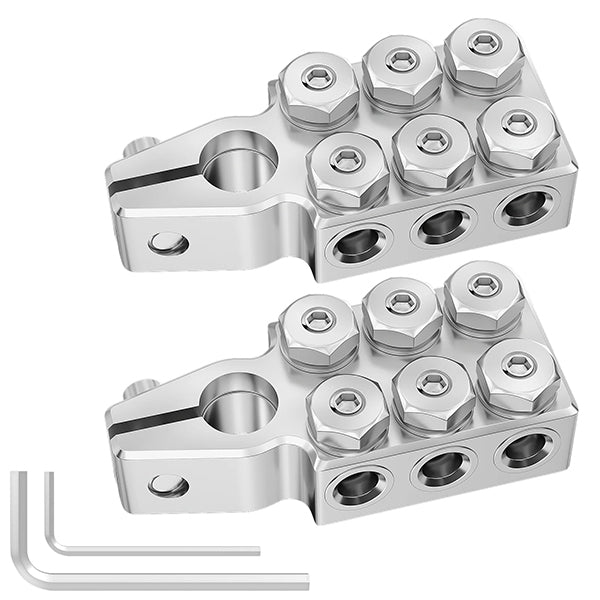Battery terminals and clamps play a crucial role in ensuring reliable electrical connectivity in various applications, ranging from automotive vehicles to industrial equipment.
These components serve as the interface between the battery and electrical system, facilitating the transfer of power and enabling the proper functioning of electronic devices. Let's explore the significance and functionality of battery terminals and clamps in electrical systems.
Secure Connection
Battery terminals and clamps are designed to establish a secure connection between the battery and electrical components. They provide a stable and low-resistance interface, minimizing voltage drops and ensuring efficient power transmission.
Properly installed terminals and clamps prevent loose connections, which can lead to electrical arcing, overheating, and potential damage to the battery or connected devices.
Versatility Across Industries
Battery terminals and clamps find applications across a wide range of industries, including automotive, marine, telecommunications, and renewable energy. In the automotive sector, these components are integral to starting, charging, and powering the vehicle's electrical systems.
Similarly, in marine applications, battery terminals and clamps withstand harsh marine environments, ensuring reliable power supply for navigation, communication, and onboard electronics.

Corrosion Resistance
Corrosion is a common challenge in battery terminals and clamps, particularly in environments with high humidity or exposure to corrosive substances.
To address this issue, manufacturers utilize corrosion-resistant materials such as lead-free brass, stainless steel, or zinc-plated steel for terminal and clamp construction.
Protective coatings and sealants further enhance durability and extend the service life of these components, even in demanding operating conditions.
Easy Installation and Maintenance
Battery terminals and clamps are designed for ease of installation and maintenance, allowing for quick and hassle-free replacement or upgrades.
Most terminals and clamps feature standardized designs and universal sizing, enabling compatibility with a wide range of batteries and electrical systems.
Additionally, innovative features such as quick-release mechanisms and color-coded markings simplify installation and ensure proper polarity alignment.
Safety Compliance
Ensuring safety compliance is paramount in electrical systems where battery terminals and clamps are used. Manufacturers adhere to industry standards and regulations governing electrical connections, such as SAE J541 and ISO 10486 for automotive applications.
Compliance with these standards ensures that terminals and clamps meet stringent safety and performance requirements, minimizing the risk of electrical hazards and ensuring user safety.
Innovations Driving Efficiency
Advancements in battery terminal and clamp design continue to drive efficiency and reliability in electrical systems. Emerging technologies such as lead-free solderless terminals, crimp-on connectors, and hybrid clamp designs offer enhanced performance and durability while simplifying installation and maintenance processes.
Additionally, smart terminals equipped with sensor technology provide real-time monitoring of battery health and electrical parameters, enabling proactive maintenance and optimization of system performance.
In conclusion, battery terminals and clamps are essential components that underpin the reliability and efficiency of electrical systems across various industries.
Their role in establishing secure electrical connections, resisting corrosion, and ensuring safety compliance cannot be overstated.
As technology evolves and demand for efficient power management grows, innovations in battery terminal and clamp design will continue to drive improvements in electrical connectivity and system performance.

